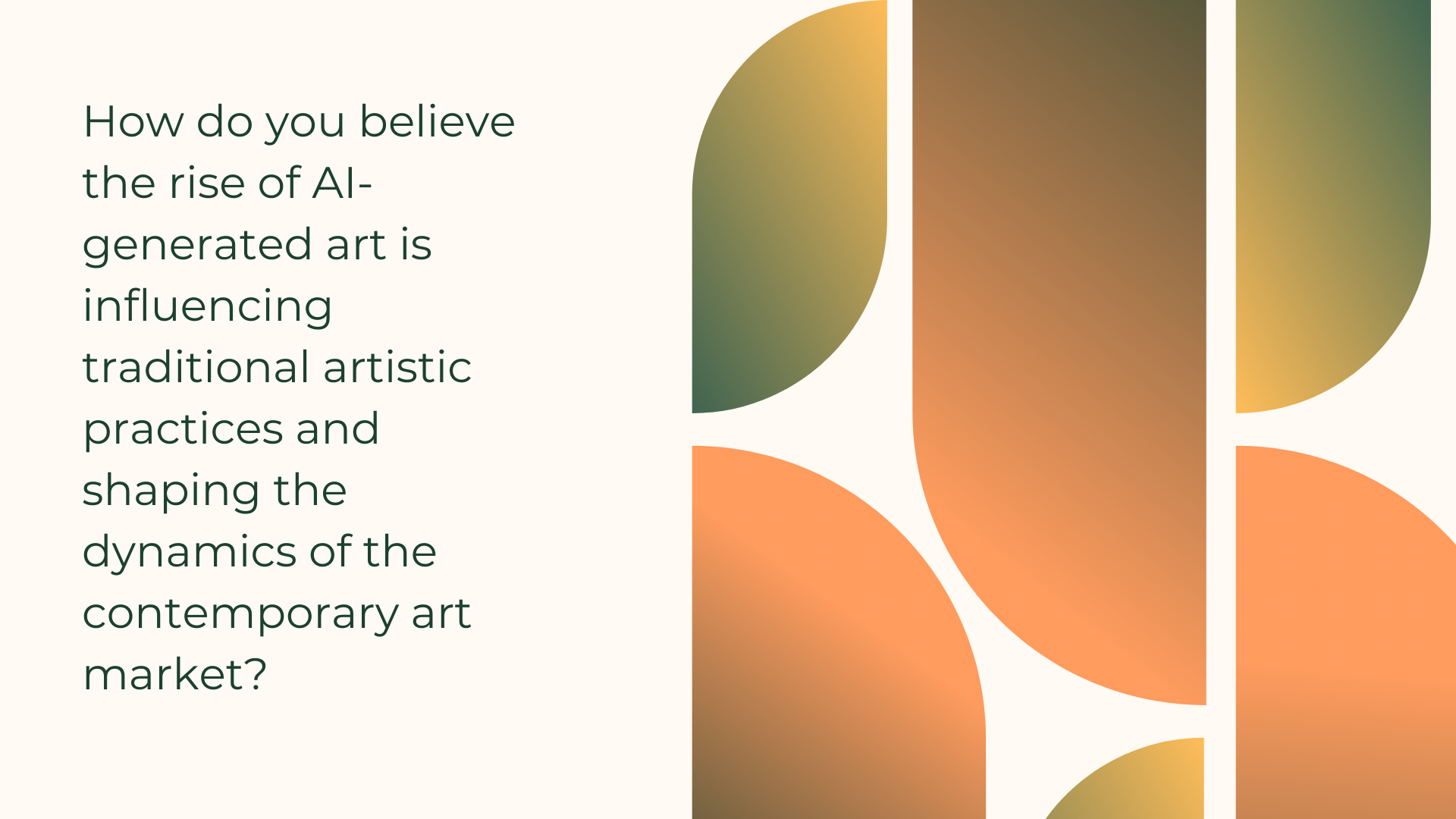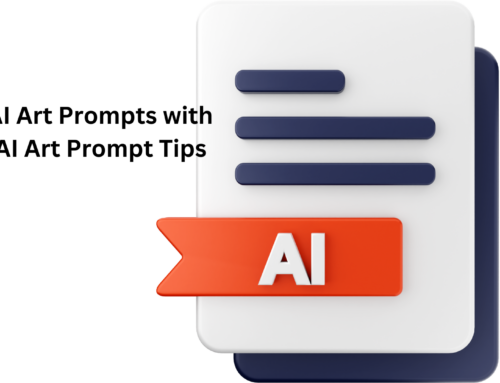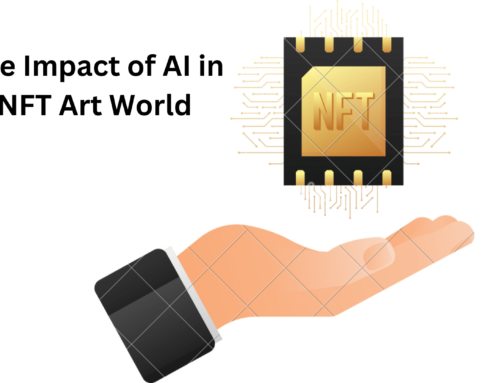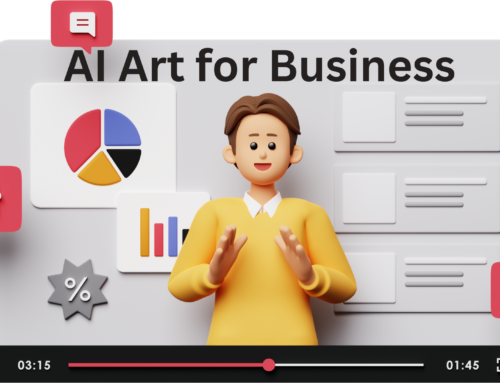In the ever-evolving world of creativity, the fusion of artificial intelligence (AI) and art has sparked a revolution that is leaving an indelible mark on the art market. This groundbreaking intersection is reshaping how we perceive, create, and value art. Let’s delve into the profound impact of AI on art market, and what industry experts have to say about this transformative phenomenon.

Exploring the Impact of AI on Art Market and Creativity
In today’s art world, the influence of AI-generated art is making waves and reshaping the way we perceive creativity. The clash between traditional art and AI-generated artwork has sparked conversations about the impact of AI on art market. Imagine this, Instead of artists using paintbrushes and canvases, AI algorithms are now being employed to create art in the digital realm. This shift in art creation has stirred curiosity about how AI is affecting the value and appreciation of art. The emergence of AI-generated artwork has introduced a new dimension to the digital art scene, and its ripple effect on the art market is something worth exploring. According to Media Monk, a powerful, AI-driven content marketing platform “AI-generated art is not just a new brush in the artist’s palette; it’s a whole new canvas of possibilities. It expands the horizon of creativity, inviting both artists and audiences to explore uncharted territories of expression.”
Is AI Art a Revolution or Imitation?
AI art’s presence in the art market’s landscape is undeniable, stirring both excitement and skepticism within the art industry. Generative AI, armed with sophisticated AI technology, has transformed the way art is perceived and created. Some argue that AI cannot truly replace the essence of human creativity, while others see the rise of AI art as a revolutionary force shaping the future of the art market. The infusion of AI in art challenges traditional notions, pushing boundaries and giving birth to a new form of art that merges the capabilities of AI image generators and traditional artistic techniques.
As we step into the future of AI in art, questions arise about the regulation of AI tools and the role of AI artists in the art market. The ever-evolving landscape of AI art prompts us to contemplate its impact on art as an investment and the potential shifts in the value of artworks. The dynamic interplay between AI and traditional art techniques fuels discussions about the coexistence of AI and creativity within the art world. The rise of AI art opens a window into the way art is perceived, created, and valued, pointing towards a future where AI continues to shape the world of art and design.
Looking ahead, the future of AI art holds promises and challenges, with ongoing debates about the ethical impact of AI on art market and the need for regulations to govern AI-generated artworks. As AI technology advances, it further blurs the line between traditional art and AI-generated creations, leaving us to wonder about the way art will continue to evolve. The coexistence of AI and human creativity in the art world marks a fascinating chapter in the ongoing story of the art market’s transformation, shaping the way art is both appreciated and created in the years to come.
Unveiling the Five Key Points in the AI-Human Artist Collaboration
As we navigate the evolving landscape of art, the collaboration between AI and human artists is reshaping the future of art creation. The process of using AI to generate art has become increasingly prevalent, raising questions about how it fits into the traditional art market. Some believe that AI art creation lacks the depth and emotional connection that human artists bring to their work, while others see it as a groundbreaking force that adds a new layer to artistic expression. The debate over the value of AI in the art world continues, with opinions divided on whether AI represents the future of art or if it’s a complementary tool in the hands of artists and creators. As AI becomes more integrated into the art creation process, the future of AI in art remains a fascinating topic within the art community. Navigating the evolving landscape of art, let’s now explore five key points shedding light on the dynamic relationship between AI and human artists and its impact on the future of art creation.
- The ongoing collaboration between AI and human artists sparks innovation in the art world.
- Some believe AI-generated art lacks the emotional depth of traditional art, questioning its value.
- The use of AI tools in art creation prompts discussions about the role of technology in shaping artistic expression.
- The future of the art market is influenced by the dynamic interplay between traditional and AI-generated artworks.
- Artists and creators explore new possibilities as they incorporate AI into their creative processes.
Impact of Generative AI on Redefining the Art Industry
Artists today are redefining traditional methods of art by incorporating AI in their work, showcasing the transformative power of artificial intelligence. The presence of AI has found its place in the art world, not as a replacement but as a powerful tool that complements the creativity of human artists. While some argue that the essence of art is far from the reach of machines, others see AI as a means to amplify artistic capabilities and push boundaries. The intersection of AI and art is reshaping the way art is created and perceived, with artists increasingly collaborating with AI to explore new possibilities and navigate the evolving landscape of the art market.
As we delve into the impact of AI on art market, one noteworthy development is the rise of generative art NFTs (Non-Fungible Tokens). AI-generated art has made its mark in the digital realm, leveraging the capabilities of AI to produce unique and collectible pieces that are often sold as NFTs. This intersection of AI and NFTs has opened up new avenues for artists and collectors, creating a digital marketplace where the role of AI extends beyond the creative process to the very transaction of art.
In this dynamic landscape, the role of AI goes beyond just the creation of art; it extends to the very foundation of how art is valued and shared. The collaborative efforts of humans and AI are reshaping the art market, bringing into focus the evolving relationship between AI and creativity. As we witness this transformative journey, the impact of AI on art market continues to unfold, prompting us to reconsider the boundaries of artistic expression and the ever-expanding role of AI in shaping the future of art.

The Creative World of Airbrush AI
In the ever-evolving landscape of AI art, one notable player making waves is Airbrush AI, a cutting-edge text-to-image generator tool. This innovative tool is changing the game by allowing users to seamlessly convert text descriptions into captivating visual artworks. The Airbrush AI art generator is not just a tool; it’s a catalyst for a new era of creativity. Artists and creators can now explore fresh dimensions in art creation, leveraging the power of AI to bring their textual visions to life in a visually stunning manner. The impact of Airbrush AI on the AI art market is significant, as it introduces a dynamic and efficient way to translate ideas into art, showcasing the transformative influence of AI on the very process of art creation.
- Effortless Translation: Airbrush AI seamlessly converts text descriptions into visually compelling artworks.
- Enhanced Creativity: The tool catalyzes enhanced creativity, offering artists new dimensions in their art creation process.
- Time-Efficient: Artists can save time with the quick and efficient conversion of textual visions into visual masterpieces.
- Versatile Application: Airbrush AI can be applied across various art styles and genres, adding versatility to the creative process.
- Market Impact: The tool contributes to the broader impact of AI on art market, reshaping how art is generated and appreciated.
A Final Glimpse into AI Regulation and the Future of AI Art
In wrapping up our exploration of the impact of AI on art market, it’s clear that artificial intelligence has sparked a creative revolution. As we discover how artificial intelligence and the creative industry are intertwined, we see that the proliferation of AI art has not only stirred interest in AI but also challenged our perception of art in the digital age. The promotion of AI art as a complementary force to traditional art forms emphasizes the collaborative potential of humans and AI. While the creation of AI art may pose challenges, the popularization of AI-generated artworks suggests a growing appreciation for the unique and innovative possibilities that AI brings to the artistic landscape. As we navigate this evolving realm, the future of AI in art holds the promise of continued exploration and transformation, shaping the way we perceive, create, and value art in the years to come.








Leave A Comment